From 2020 to 2022, our Think Differently then ACT campaign has been instrumental in driving transformative change within our community. Through this initiative, we have fostered a steadfast movement towards becoming the most disability-friendly community in the country. With unwavering determination, we have dismantled biases and empowered individuals to advocate for inclusivity. We have focused on impactful storytelling, shedding light on the experiences and triumphs of individuals with disabilities. Additionally, our efforts have extended to strategic planning, as we have begun work on our campus master plan, positioning ourselves for remarkable development and giving opportunities. By launching our Corporate Membership Program, we have invited partners to join forces with us, providing them with accessibility resources, real-time education on disability etiquette, and the chance to contribute to community investment projects. Moreover, we have established donor societies to recognize lifetime giving and honor those planning to leave a lasting legacy. The impact of our endeavors is undeniable, as demonstrated by the multitude of information and referral calls answered, the distribution of assistive tech and medical equipment to numerous consumers, and the completion of home accessibility projects, all benefiting thousands of individuals with disabilities. As we reflect on these remarkable achievements, we are fueled by gratitude and inspired to continue our pursuit of a more inclusive and empowering future.

Centennial Celebration September 2021
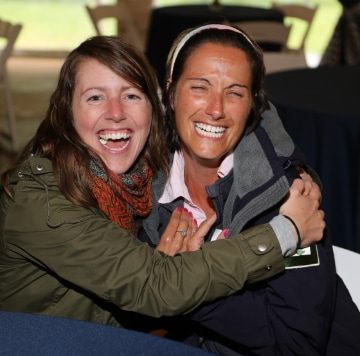
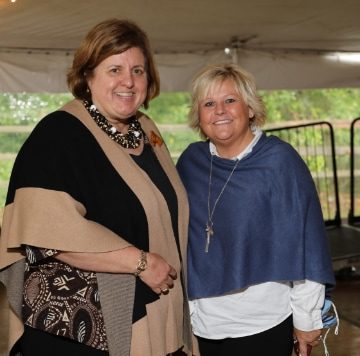
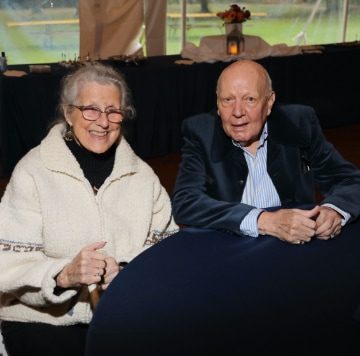
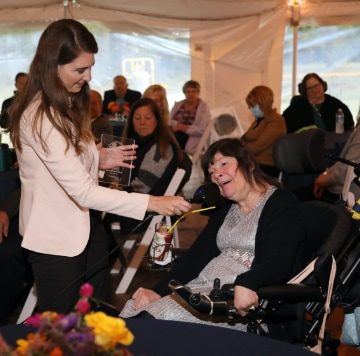


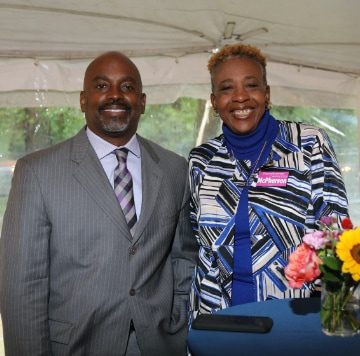
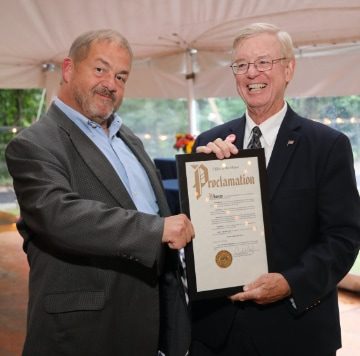
Hall of Fame

Edward Schmakel, was born in Toledo on December 13, 1917 to Hugo and Melina Schmakel. He had an older half-brother and four younger brothers, one of whom died in infancy. He contracted polio at a very young age and attended Charles Feilbach School for Crippled Children. He graduated from Libbey High School in 1935, and from The University of Toledo in 1939. He returned to University of Toledo later in life, receiving his Masters in 1968.
In 1947, he married the love of his life, Helen Gertrude Garver. They would have two boys, Bruce and Gary.
Ed began his career with The Ohio State Department of Public Welfare before working 18 years with Graphic Arts Corporation of Ohio. He then dedicated 25 years to The University of Toledo where he held the position of Director of Alumni Relations for 20 years, and Development Director for 5 years, retiring in 1987. For the rest of his life, he held the status of Alumni Director Emeritus.
As a student, alumni, and employee of UT, Ed was a leader and advisor in numerous organizations and received countless awards and honors. Among them were Phi Kappa Psi/Sigma Beta Phi Fraternity, Blue Key National Honorary Fraternity, Phi Kappa Phi Scholastic Honorary, Mortar Board, Tower Club, Rocket Club, Blue “T”, and UT Alumni Association.
Over his life, Ed Scmakel touched and influenced thousands of lives, mostly young lives. To this day he is well-loved on campus. His portrait hangs over the Italian marble fireplace in the Schmakel Lounge, one of the university’s premiere reception locations. Additionally, UT recognized his service in 1993 by naming the Edward C. Schmakel Alumni Center in his honor.
Off campus, Schmakel was also an active civic and community leader sitting on numerous boards and commissions, including: The Ability Center, TARTA Board (President), State of Ohio Bureau of Vocational Rehabilitation, Masons, Downtown Coaches Association, Epiphany Lutheran Church (Chairman of Parish Education) and many others.
Ed loved gardening and spending summers at his cottage on Dewey Lake near Brooklyn, Michigan, with family and friends. Ed passed September 28, 2005.
A personal reflection from Tim Harrington:
“Ed was one of the kindest men I have ever met. As a first-year student at UT, I witnessed a person with a disability command the respect of others by his professionalism and character. He was a role model with whom we shared the love of fraternity and a lifetime of friendships in brotherhood. When tuition was tight, Ed always found a small pot of money to get me through.
Ed knew everyone in town. When I became director of the Ability Center, he became my coach. Lunchtimes with Ed would include a little “Comfort” to begin with and community connections of which a new director could only dream.
Ed and others with disabilities paved the way for individuals like me. They did it with grit and determination, covered with a charm that would disarm the most uninformed.”
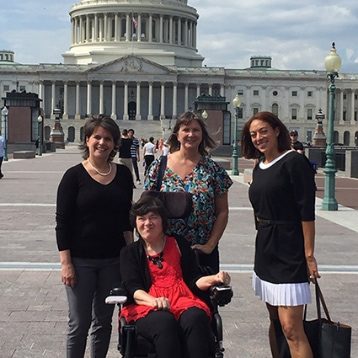
Born into extreme poverty, Renee Riddle, along with her younger brother and sister didn’t have enough to eat, but her mom made sure they at least had something in their stomach before bed. Poverty alone may have set Renee back, but she was also born with Cerebral Palsy, a condition which made it difficult for her to walk, talk, or use her hands. Although doctors told Renee’s mom to place her in an institution because she would “never be able to do anything for herself,” Renee’s mom said, “no” and brought her first born home.
These echoes of low expectations would plague Renee throughout her childhood and into her early adulthood, yet she refused to conform to society’s expectations for people like herself. She often caused a ruckus when she was not being treated the same as her non-disabled peers. Her first successful protest was at just 17-years-old, when she convinced her younger sister to sit with her outside the Special Ed religious classroom where she refused to enter and participate, claiming “I do not belong in there!” The priest ultimately relented, allowing Renee to be in her sister’s typical confirmation class.
After high school, Renee was given little hope when an assessment stated she had few prospects for gainful employment or living independently. Undeterred, at 19, Renee moved out of her parent’s house, and, with the help of Toledo Society for the Handicapped, moved into the YWCA, and then into her own apartment. A week after moving into the Y, she started college at the University of Toledo.
Renee’s second successful outcome against discrimination occurred when her application was approved for a summer job. When she showed up for work, they wanted to send her home. She pointed out to the employer he had not given her a chance, and it sure felt like discrimination. The next day, Renee was given a supervisory position – with a pay raise. She was fearless, challenging herself to do anything necessary to see the full potential of people with disabilities in society. This included public demonstrations of peaceful civil disobedience which a few times resulted in arrest and time in jail – often with terrible conditions. Happening before the Americans with Disabilities Act (ADA) – Renee was one of the many helping to pave the way for generations to come.
Renee holds two degrees from the University of Toledo. She landed her dream job at the Ability Center as Disability Rights Advocate, which gave her the knowledge she needed to move on to do statewide advocacy. Sharp, articulate, and able to get right to the root of a situation, Renee has admired and feared for making no exceptions to inclusion and equality for all people, especially those with disabilities. Although her physical ability was forever changed by an operation in 2003, she picked herself up, and with the assistance of her devoted husband, went on to even better things.
A born leader, she was appointed by the Governor to chair the Ohio Developmental Disabilities Council – only the second person with a Developmental Disability to chair the council. Many of the changes realized under her tenure remain today. She also Chaired the Ohio Olmstead Task Force and served as a board member for both the Ohio Statewide Independent Living Council and Ability Center. The number of State workgroups Renee has been a part of numbers in the dozens. Her voice has been crucial in policies written by the State since 2010. Even while facing Stage III Ovarian cancer in 2017, and while going through chemo, and 2 reoccurrences of the cancer, Renee continued with her leadership positions, as well as her efforts to cause systemic change. It has been said, “Renee will not die in bed, but rather, sitting in her power chair testifying at the Statehouse.”
Through the years Renee’s efforts have been recognized by several awards: in 2008, she was named Lucas County Board of DD Advocate of the Year. At the 2016 Synergy conference, PAR & OSDA surprised Renee with their seldom given Synergy Award. Renee was a finalist for the 2017 Soaring Phoenix Award, and after each finalist gave their presentation, she won the award. In 2019, Molina Health Care recognized her with the Northwest Ohio Trail Blazer Award, for which she received an Official Recognition from the Ohio Senate. Finally, in 2020, The National Council for Independent Living gave her the Region V Advocacy Award.
For all these reasons, efforts, and honors, Renee Michelle Riddle Wood is being inducted into this inaugural class of the Ability Center Hall of Fame.
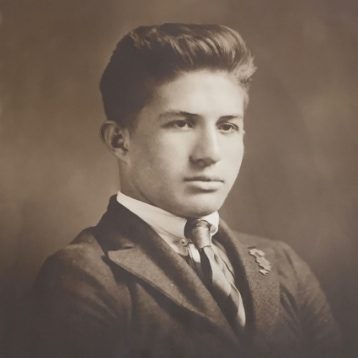
April 7, 1901 – January 2, 1979
Alva Bunker was the second of 10 children born to George and Lena Bunker. Born with underdeveloped limbs, he was not sent to school, considered uneducable. He spent his days riding a home-made skateboard around the alley behind his home on Michigan Street. His discovery in March 1916, was brought to the attention of Rotary by either by Emma Roberts, head of the District Nurses Association, by a group of ladies known as the “One Talent Club,” or by both. He would become Rotary Club of Toledo’s first “case.”
Removing this “Little Lame Prince” from his makeshift skateboard, alley life, and family, to benefit from all medicine and rehabilitation had to offer would be so successful as to “startle” the club. They became “most enthusiastic” about their work. Alva’s unfolding success story would shine the world-wide Rotary spotlight on Toledo, Ohio. Shared far and wide by Toledo Rotarians and great orators, Frank Mulholland and Ed Kelsey, the story of Alva would lead to crippled children’s work becoming the main service focus of Rotary International.
So, the Crippled Children’s movement, the Society for Crippled Children, and International Rotary’s focus of serving crippled children all began in Toledo and northwest Ohio.
Within a month of being discovered, and having found no suitable specialists in Toledo capable of assisting with all Alva needed, the young man was sent to the Van Leuvan Browne Hospital (Michigan Hospital School for Crippled Children) in Detroit on April 27, 1916. Having never been out of his lower Toledo neighborhood, or in a motor car for that matter, the trip to Detroit by train was a marvel to young Alva.
Soon after his arrival, this brave young man underwent a number of surgeries to amputate his underdeveloped limbs, making the use of prosthetic limbs possible. Once healed, he would be able to stand tall and become a productive member of society. Thought to be uneducable, he was enrolled in school at the hospital. There, he excelled, moving through several grades in only months.
Still, being away from his mother and family for the first time in his life took a toll. Alva was going through so much for a young man, and he was going through it alone. Toledo Rotarians got wind of him needing some cheering up. According to a Toledo Blade article, 100 Rotarians set aside business on July 11, to travel ‘en masse’ to the Detroit hospital to “cheer up” the lad.
It was a day none would forget, especially Alva.
Three months later, in October of 1916, Alva returned home on artificial legs to see his mother. As the story goes, she was washing potatoes when he arrived unannounced. Went he entered, she did not recognize him standing, not until he said, “Do you not recognize me, Mother?” It was at this moment she dropped the pot of potatoes.
It was this visit to Toledo that also brought Alva before Rotary where he said a few words, empowering Toledo Rotarians to work even harder for crippled children. Over the course of the next year, Alva would continue to improve, study, and grow. He would receive even better prosthetics in June of 1918. He would graduate from school, learn to drive a car, and earn a position of Superintendent for a facility in Port Huron, Michigan. During this time, he would accompany Rotarians on the speaking circuit, helping to lay the groundwork for widespread Rotarian support of Crippled Children. Later in life, Alva Bunker would become a skilled auto mechanic, a far cry from the homemade skateboard and bleak future he faced in a dusty old alley off Michigan Street.
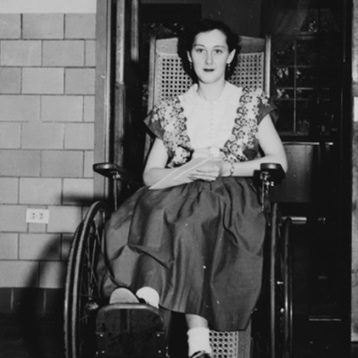
July 25, 1914 – November 20, 1990
Born in Pemberville, Ohio on July 25, 1914, Arvella Sander contracted polio at 17, during her Senior year at Pemberville High School. Early in her rehabilitation, she spent a few months at Toledo Society for Crippled Children’s first Convalescent Home before transferring for further treatment to the Georgia Warm Springs Foundation made famous by President Roosevelt.
Upon her return, Arvella attended the Secretarial School associated with our Toledo Society for Cripple Children and then came to work as a secretary and counselor for 17 years at Opportunity Home, our convalescent home for children with polio. She would often be found playing the piano in the dayroom for the children. Following this, she continued working as a medical secretary in the radiology department at Parkview Hospital, and then at a doctor’s office.
While at Warm Springs, Miss Sander discovered an organization called the “Indoor Sports Club.” She brought the idea back to Toledo, starting a local chapter, along with the club’s sister organization the “Good Sports Club,” made up of able-bodied friends wanting to help people with disabilities enjoy social activities and outdoor recreation opportunities. In 1954, she was elected the national president of the club requiring extensive travel around the country. It also got her prestigious national advocacy appointments, e.g., The White House Conference on Handicapped Individuals, National Chair of the Congress of the Physically Handicapped Employment, and Secretary of The Citizen’s Steering Committee for Independent Living.
In 1963, Arvella was presented with the Gallantry Award, the highest honor bestowed by the National Society for Crippled Children and Adults. While traveling and speaking with disabled people around the country, Arvella became very aware of the myriad access barriers that faced people with disabilities everywhere and every day: steps, narrow doors, inability to access buses, trains, and airplanes, lack of curb cuts, no affordable and accessible housing. Even her own apartments had stairs until 1968 when she moved into Vistula Manor.
In 1971, she founded Barrier-Free Toledo, a disability advocacy group dedicated to making Toledo more accessible to its citizens and visitors with disabilities. Over the next two decades, this group would become one of the premiere advocacy voices in Toledo, annually educating policymakers and business owners during “Handicapped Awareness Week” about existing public path of travel, architectural, and attitudinal barriers by having them negotiate public spaces in wheelchairs and/or dark glasses and ear plugs. She and they also fought for curb cuts, automatic doors, accessible bathrooms, and public transportation.
In 1973, she and the Barrier-Free committee were presented the Chairman’s Award from then-Ohio Governor John Gilligan’s Committee on Employment of the Handicapped.
Beyond being one of our earliest polio patients, and, subsequently, hospital secretary and counselor for 17 years, Arvella was a longtime board member and fixture for the organization, often seen greeting visitors and dignitaries at the front door during public events and receptions. She retired from her work life in 1984 and passed in late November 1990.
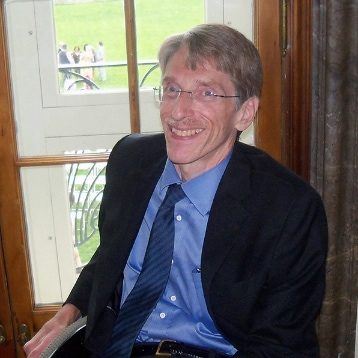
Edward Charles Nieshoff, Jr. was born Feb 9, 1957, in Carthage, Missouri, to Edward and Elizabeth Nieshoff. When in 6th grade, his family moved to the Toledo/southern Michigan area. He attended Burnham Junior High School and graduated from Sylvania High School in 1974.
Thereafter, he attended Ohio University, where he studied Zoology and Chemistry. In the spring of 1978, while spending time living on rental property in a remote area of the Hocking Hills in southern Ohio, he dove into Raccoon Creek, fracturing a vertebra in his neck, causing a spinal cord injury at the C6 level. He spent his rehabilitation hospitalization at the Ohio State Medical Center’s Dodd Hall. From the outset, his recovery was medically complex. He endured a number of serious complications and counts himself lucky to have survived.
Not dissuaded by his disability, he returned to college shortly after rehab, and after becoming acclimated to living life with a disability, he completed his undergraduate studies, majoring in Genetics at The Ohio State University. He pursued his biomedical interests further at the University of Toledo, in the graduate molecular biology program during which time he was awarded consecutive competitive appointments as a graduate teaching assistant. It was during this time that Ed began to consider medicine as a career path. He explored life precedents using the Ability Center’s Resource Library and participated in its fitness programming for the long road ahead of him. He was encouraged and supported by several prominent mentors, including William Bischoff, Ph.D., Professor of Biology at UT in the Department of Biology, and Victor Cummings, M.D., Eleanor Coughlin Chairman and Professor of the Department of Physical Medicine and Rehabilitation at the then- Medical College of Ohio. The relatively unique perspective that a “Dr.” Nieshoff could bring to the field, his colleagues, and, especially his patients, was acknowledged by Drs. Bischoff and Cummings, and both advocated strongly for his admission to the MCO School of Medicine.
Following his subsequent acceptance to the School of Medicine, Ed asked for no substantive modifications of the curriculum: The sole accommodation he received was that recommended by the Association of Academic Physiatrists: If he were to encounter a task he was physically unable to perform, he was required to acquire the ability “to understand and direct the methodology involved.” He was thus mandated to carry the same patient load and work the same overnight schedule in the hospital on-call as his peers. He did use some assistive technology, e.g., a standing wheelchair and dynamic hand splints for cadaver dissection, and observed surgical procedures during his surgical clerkship, and participated in such procedures to the best of his ability. He was awarded his Doctor of Medicine from the Medical College of Ohio in 1991 and was invited to stay for his internship there in 1992, which he did, and subsequently was accepted into the PM&R residency at Wayne State University, which he completed in 1995. His clinical performance and double-boarded status were acknowledged during his training, such that he was appointed Assistant Professor in the Department of Physical Medicine and Rehabilitation, in the School of Medicine at Wayne State University in Detroit, Michigan.
On the clinical side of medicine, Dr. Nieshoff began his career as a staff physician running the Spinal Cord Injury Service at the Rehabilitation Institute of Michigan in Detroit, Michigan. Upon becoming boarded in SCI Medicine, he advanced to become the Medical Director of this service, and ultimately Director of the Spinal Cord Injury Outpatient and Research Programs at the Institute.
Over his career, Ed has been an author, researcher, and principal investigator for many grants, clinical studies, and clinical trials. He has received several awards and honors, including Physician of the Year from the Rehabilitation Institute of Michigan; his peers chose him as one of the Top Doctors in America by U.S. News and World Reports, and he received a Lifetime Achievement Award from the Wayne State University Physical Medicine and Rehabilitation Residency Program. As Dr. Cummings foretold, Dr. Nieshoff, with his unique perspective and position as a physician living with a disability, made a significant impact on medicine, in particular the medical specialties concerned with spinal cord injury and rehabilitation.
Following his retirement from clinical practice in 2012, Dr. Ed Nieshoff continues to pursue his pharmacological research interests, and resides in Farmington Hills, Michigan, enjoying life with his wife, Aruna, whom he married in 1999, and his twin sons, Edward and Charlie.

Matt Sterling was born March 8, 1969, in Bowling Green, Ohio to Dallas and Mary Sterling. The youngest of three, Matt was diagnosed with scoliosis and arthrogryposis in his lower extremities. After multiple exploratory surgeries at Columbus Children’s Hospital, he was sent home to begin his family life. His mobility was impaired, and he used braces and crutches before transitioning to a wheelchair.
Growing up, Matt was raised like any other child, his parents found a great resource in the Toledo Society for the Handicapped (now The Ability Center). He attended the “Little Yellow Schoolhouse” kindergarten where, in addition to the basics, he learned skills like walking with crutches, opening doors, and putting on his jacket. It was a friendly place where he met kids with a variety of disabilities which made him feel like just “one of the group.” During the summers, Matt attended Camp Cricket at the Ability Center and, as a camper, participated in a variety of activities and even made his first basket on the court in the newly constructed gymnasium. He would go on to play wheelchair basketball for the Center’s team. Matt’s sister Amy also became a camp counselor and was a big part of his development in his early years. He and his brother, Tim, were Boy Scouts in their dad’s troop and had many camping adventures.
When Matt began his schooling there were two tracks in the public school system. Disabled students were encouraged to attend a specialized school apart from the able-bodied students. Given he had full mental capabilities, his parents were insistent on mainstreaming him. Due to inaccessible classrooms in the public grade schools, he attended a private grade school at the convent at St. Francis. Once he graduated to 7th grade, he entered McCord, the local, more accessible public school.
The family moved to Florida when Matt entered 8th grade. There, he attended the local public school. In high school, he flourished socially and was elected Class President three of the four years at Bayshore in Bradenton. (Would have been all four but for a one year stop over for his Junior year in Cocoa Beach, where his dad was completing construction on NASA’s Rocket Booster Recovery Station.)
Matt received the Walt Disney “Dreamers and Doers” award and delivered the address at his high school graduation in 1987. He was accepted to the University of Florida and holds a Bachelor of Science in Advertising. During his time at UF, Matt played wheelchair basketball with the North Florida Renegades and learned to play wheelchair tennis from his friend Craig Swanson, a decorated Vietnam veteran who served in the USMC.
After an exploratory trip to New York City to network with executives, Matt accepted a position as a Media Planner at LINTAS – an ad agency that handled IBM, Sara Lee, and Johnson & Johnson, among others. After a few years on the agency side, Matt accepted a job at TIME Magazine. During his 20+ years with Time Inc. as a sales and marketing executive, Matt traveled around the world several times and lived in NYC, San Francisco, and Los Angeles.
While in LA, Matt met his wife, Carrie Lane, who holds a BA from Princeton, a PhD. from Yale and is a tenured professor at Cal State Fullerton in American Studies. They have traveled together to Canada, Mexico, and South Africa. They have a 7-year-old son, Frank, who is showing interest in soccer, baseball, and science.
OUR HISTORY
We began in 1920 with a mission to help children. Many of the children were not welcomed in mainstream schools. Most also had not received proper health care. We played an important role as part of an innovative movement to help children get what they needed. Our agency became a home for these kids, supporting and encouraging them to remove social barriers caused by their disability. Because polio and similar disabilities required lengthy stays, we housed school in our hospital. We served thousands of young people in our hospitals until the late 1950’s, when the Salk Polio vaccine greatly impacted our need. Our hospital closed in 1963 and our focus on shifted to education.
Our organization transformed into a preschool and kindergarten for children with disabilities, offering an inclusive education until the mid-1970’s At this time, schools began welcoming students off all abilities in mainstream schools. In response to this change, we evolved into a service agency for people of all ages and disabilities. During the push for the passage of the Americans with Disabilities Act (ADA), we became a Center for Independent Living, and changed to our current name, The Ability Center.
Today, we empower people of all ages and all abilities through core services focused on consumer choice and increased independence. As we begin our second century, we continue to grow and develop, addressing the needs of the 21st Century. We invite local businesses leaders and community members to engage with us and help us get closer to our goal of becoming the most disability-friendly community in the country.
1920 – 1960
A Rotary Dream
For 100 years, The Ability Center’s mission has been to support people with disabilities. Programs have adapted to remove current barriers to independent living for people with disabilities in northwest Ohio.
1920
The Toledo Society for Crippled Children is established by The Rotary Club to raise funds to build a hospital and rehabilitation facility for children with polio.
1931
A portion of a bequest from the Edward Drummond Libbey estate is used to modify the “Old Ladies Home” on Central and Collingwood to create the first hospital and convalescent home for children with disabilities. It serves as a temporary space as the Society raises funds for a permanent facility.
1937
The Opportunity Home opens thanks to the balance of the gift from the Edward Drummond Libbey estate and strong community support. The hospital is located in what is now Lake Erie Academy on Central Avenue.
1937 – 1960
We serve the area as a hospital, which includes a school for children recovering from polio, until the arrival of the Salk vaccine in the mid-1950s.
1960 – 1990
Transforming with the Times
From 1960-1990, dedicated disability rights activists were successful in establishing federal laws to ensure that people with disabilities had the right to an education and to community inclusion.
1960s
A dedicated shift to education transforms the facility into Opportunity Kindergarten, a school for children with disabilities. The school is housed in the Libbey House in the Old West End.
1975
Public school policy legislation welcomes students of all abilities into mainstream schools. The Ability Center evolves again and begins serving adults with disabilities as well as children. The name changes to Toledo Society for the Handicapped.
1989
The movement to create a nationwide network of independent living centers migrates to northwest Ohio. The Board of Trustees changes our mission to become a Center for Independent Living, one of over 500 across the country.
1990
After decades of campaigning, the Americans with Disabilities Act is passed. The Toledo Society for the Handicapped becomes The Ability Center of Greater Toledo.
1990 – 2019
Independent Living Movement
With the advent of the Americans with Disabilities Act and a national network of Centers for Independent Living, the focus of The Ability Center moves towards providing core services of advocacy, information and referral, independent living skills training, peer supportand mentoring, and transition.
1990 – 2019
The Ability Center serves seven counties via its main office in Sylvania, OH, and a satellite office in Bryan, OH. Programming aims to create greater independence and stronger connection to the community.
Support and information are provided to community organizations and businesses to offer inclusive programs and services to all citizens.
2020
The Next Century of Service
Through the Disability Dialog campaign we pose the question, “What would it take to make our community the most disability friendly in the country?”
Thoughtful discussions are organized by different community groups in response to our inquiry.
2020
Innovative initiatives are unveiled to highlight our rich history of service, evolution as an agency, and role in creating the most disability-friendly community in the country.

